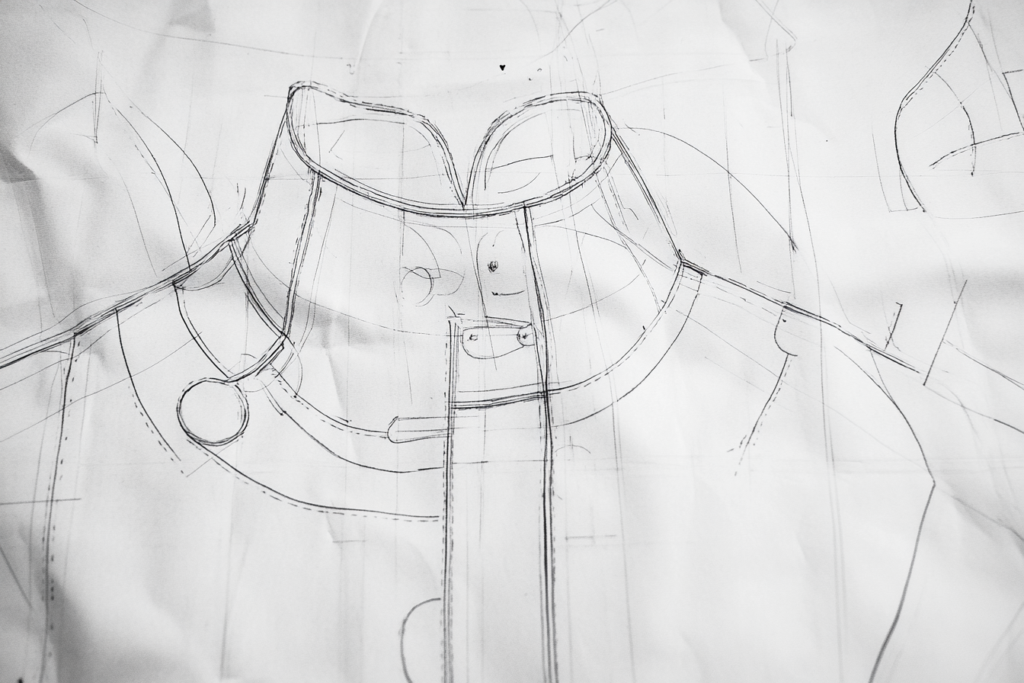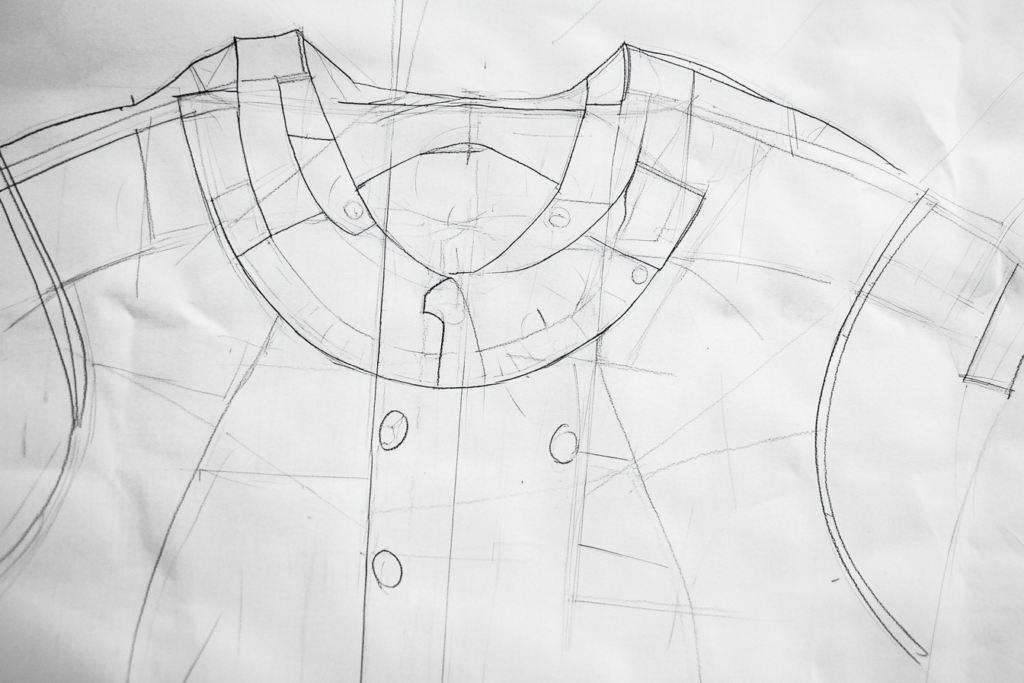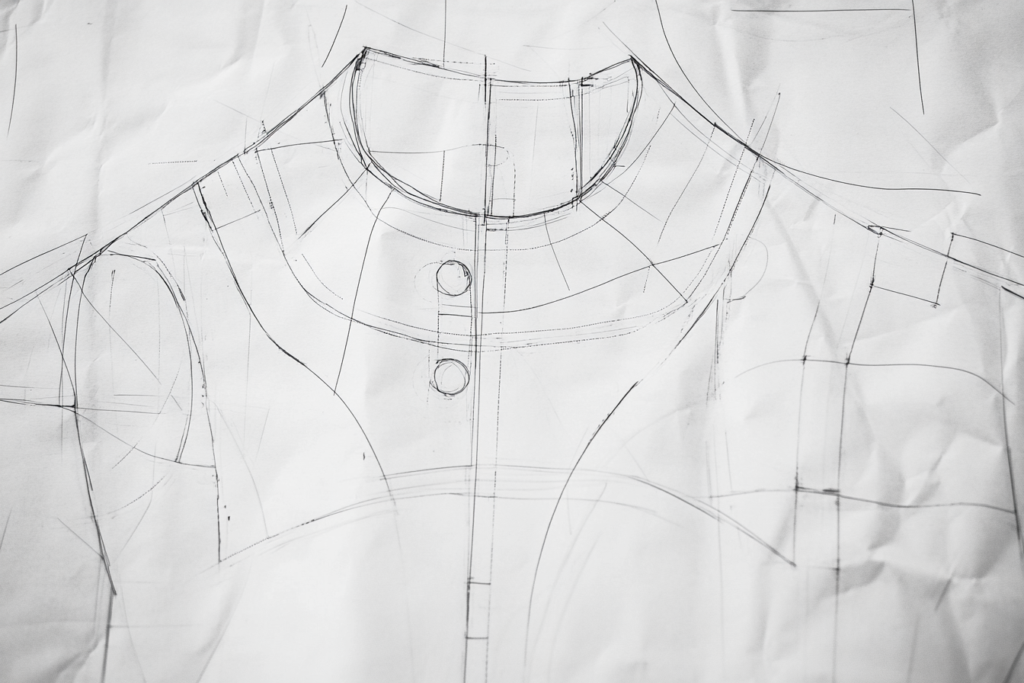Seamline: Understanding the Marking of Garment Seams
Meta Description: The seamline is the line that marks where the seams are stitched on a garment. Learn about its role in garment construction, how it differs from the cutting line, and its importance in achieving a perfect fit.
What is a Seamline?
In garment construction, the seamline refers to the precise line that marks where two pieces of fabric are sewn together to form a seam. It is the stitching line, where the fabric pieces are joined to create the final shape of the garment. The seamline is crucial for accurate garment construction as it dictates the fit, structure, and overall silhouette of the finished piece.
The seamline is distinct from the cutting line (the outermost line on a pattern), as the cutting line is used to cut the fabric, while the seamline is used for sewing the fabric pieces together.


Key Features of Seamlines
✔ Stitching Guide: The seamline acts as the guide for where the stitching should be placed during construction.
✔ Indicates Fit: The position of the seamline directly influences how the garment will fit.
✔ Accuracy is Crucial: A well-placed seamline ensures that the final garment has smooth, precise seams.
✔ Not the Same as the Cutting Line: While the cutting line is used to cut out the fabric, the seamline is the one that defines where the fabric pieces are joined.
Why is the Seamline Important?
- Defines the Shape of the Garment
The seamline is critical because it determines the overall shape and fit of the garment. The position of the seams will define whether the garment is loose or fitted, as well as the silhouette. For example, side seams, armhole seams, and shoulder seams all contribute to how the garment sits on the body. - Ensures Proper Alignment
When sewing a garment, aligning the fabric pieces accurately along the seamline ensures the pieces match up perfectly. This alignment is necessary for the garment to have smooth seams and even proportions. - Helps with Seam Finishes
Knowing the seamline is also important for choosing the appropriate finishing technique (such as overlocking, French seams, or pinking) to prevent the raw edges from fraying and to ensure the garment’s durability. - Affects Fabric Placement and Cutting
Since the seamline is where the fabric pieces are stitched, it helps determine how much fabric you’ll need for each section of the garment. It also plays a role in pattern placement to ensure that fabric prints or patterns are aligned properly when the garment is sewn together.
Seamline vs. Cutting Line
| Feature | Seamline | Cutting Line |
|---|---|---|
| Purpose | Guides where the fabric is sewn together. | Marks the edge of the pattern piece for cutting. |
| Location | Inside the pattern, closer to the center. | Outside edge of the pattern piece. |
| Use in Construction | Helps to form the structure and fit of the garment. | Helps to shape the fabric pieces before sewing. |
| Influence on Fit | Directly affects how the garment fits the body. | Indirectly affects fit by determining how fabric pieces are shaped. |
How is the Seamline Used in Garment Construction?
- Creating the Pattern
In pattern making, the seamline is drawn on the paper pattern to guide the placement of stitching. It is positioned based on the garment’s design and intended fit. When drafting a pattern, the seamline is often marked with a dashed or solid line, depending on the pattern maker’s preference. - Cutting and Stitching
After cutting the fabric along the cutting line, the fabric pieces are aligned and sewn along the seamline. Accuracy in this step is crucial to ensure the pieces fit together as intended and that the garment’s shape is maintained. - Fitting Adjustments
The seamline also plays an important role in fitting adjustments. If a garment is too tight or too loose, the seamline can be adjusted slightly to alter the fit. This is commonly done during fitting sessions when alterations are made to ensure the garment fits perfectly.
Where Are Seamlines Found in Garment Construction?
📌 Side Seams
The most common type of seamline is the side seam, which runs from the underarm to the bottom hem of a garment. This seamline is crucial for determining the width and fit of the garment.
📌 Shoulder Seams
Shoulder seams are vital in the fit of the upper body portion of a garment. The seamline here ensures that the sleeves and body align correctly.
📌 Armholes
The seamline around the armhole affects how the sleeves sit. It is essential for ensuring that the armhole is neither too tight nor too loose.
📌 Necklines and Waistlines
Necklines and waistlines are also defined by seamlines. The correct placement of seamlines at the neckline and waist is crucial for the desired garment shape.
How to Mark and Use a Seamline
- Use Pattern Markings
Seamlines are typically marked on the paper pattern with a dashed or solid line. These markings guide the positioning of the fabric pieces during cutting and stitching. - Pinning Fabric Pieces Together
When sewing, fabric pieces are pinned together along the seamline to ensure that the pieces stay aligned before stitching. - Sewing Along the Seamline
After pinning the pieces together, the fabric is sewn along the seamline. It is important to stitch precisely along this line to ensure that the final garment fits correctly.
Conclusion: The Role of Seamlines in Perfecting Garment Construction
The seamline is a key element in garment construction, as it determines the fit, shape, and structure of the final piece. Understanding where to place the seamline, how to mark it on patterns, and how it influences the overall fit and finish of the garment are essential skills for designers, pattern makers, and sewists alike. By paying close attention to seamlines, you can ensure that your garments are well-constructed, flattering, and durable.



